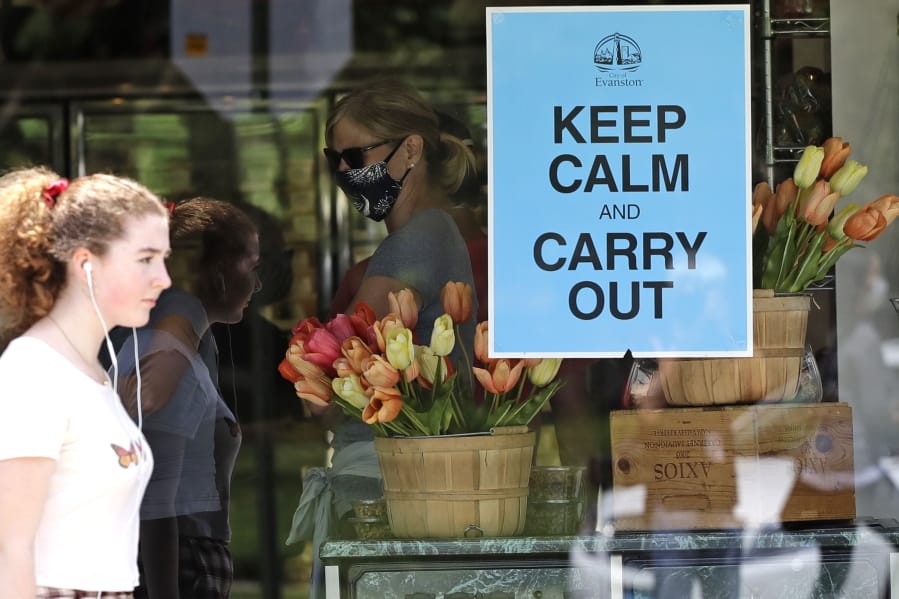WASHINGTON — With new U.S. economic numbers highlighting the rough road ahead for a hoped-for rebound, President Donald Trump on Friday took aim at the World Health Organization and China, blaming both for their roles in the pandemic’s devastation.
Trump announced that the United States will end its support for WHO, charging it didn’t respond adequately to the health crisis because of China’s “total control” over the global organization. Trump said Chinese officials “ignored” their reporting obligations to the WHO and pressured the agency to mislead the world when the virus was first discovered.
Earlier Friday, U.S. Commerce Department statistics showed a record-shattering 13.6 percent drop in spending in April, a day after a federal jobs report showed another 2 million-plus Americans went out of work last week. The depth of the spending drop is particularly damaging because consumer spending is the primary driver of the economy.
The bad economic news was echoed in Europe, where an extensive social welfare net was showing signs of fraying, as protests erupted for a second day in Spain against layoffs by French carmaker Renault and Italy’s chief central banker warned that “uncertainty is rife.”
While some states moved ahead with steps to reopen businesses and leisure activities needed to spur spending and restore jobs, some were finding relaxed safety measures have been followed by upticks in new cases.
Arkansas has seen a steady rise in active coronavirus cases following moves by Gov. Asa Hutchinson to reopen businesses shuttered during the pandemic.
Health officials on Thursday announced the number of active cases, excluding people who have recovered or died, hit a new high of 1,830 in the state, which has had a total of 6,538 cases. Arkansas also hit a record for a one-day increase in infections in the community, meaning ones that don’t include the incarcerated.
“We’re not going to go back, but we want people to follow those guidelines, make sure they do everything they can to avoid the spread and we can get through this,” Hutchinson said.
However, a rural Northern California county decided to temporarily rescind its order allowing reopening of restaurants, shopping and other services after its first coronavirus cases developed.
Lassen County had no reported coronavirus cases until May 22, when state data showed it was one of only two California counties with zero cases. But as of Wednesday, the county of 30,000 people had reported five known cases. Lassen County had started reopening businesses under state rules on May 11.
New York City was on track to begin reopening June 8 as the state gradually loosens restrictions, Gov. Andrew Cuomo said Friday.
The nation’s worst pandemic hot spot was meeting goals set for hospital rates and testing, will “stockpile” personal protective equipment like masks and will focus on infection rates in outbreak areas by ZIP code, he said. He made the remarks as a large swath of upstate New York got the go-ahead Friday to reopen hair salons, retail shops and offices under strict guidelines. New York City remains the only region of the state that hasn’t started reopening.
A federal public health study released Friday shed more light on the contagion’s beginnings in the United States. The most comprehensive federal study to date concluded that the spark that started the U.S. coronavirus epidemic arrived during a three-week window from mid-January to early February, before the nation halted travel from China.
Some people have claimed Americans were getting sick from the coronavirus as early as November and that infections were spreading in the U.S. before any case was identified, said Dr. Robert Redfield, the head of the U.S. Centers for Disease Control and Prevention. Redfield said the study “puts data into the discussion.”
The U.S. Commerce Department figures showed that consumers are unable or reluctant to spend, even as incomes soared 10.5 percent in April, reflecting billions of dollars in government payments in the form of unemployment aid and stimulus checks.



